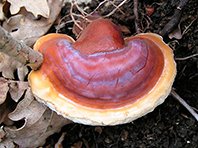Микробиота кишечника у детей с ожирением. Роль пробиотиков - «Инфекционные заболевания»

Журнал "Медицинский совет" №10/2020
DOI: 10.21518/2079-701X-2020-10-134-142

1Российская медицинская академия непрерывного профессионального образования;
2Детская городская клиническая больница им. З.А. Башляевой
Ожирение является глобальной проблемой современного здравоохранения. В 2016 г. Всемирная организация здравоохранения подсчитала, что 39% лиц старше 18 лет имеют избыточный вес, а за период с 1975 по 2016 г. количество лиц, страдающих ожирением, во всем мире почти утроилось. Количество детей с избыточной массой и ожирением растет тревожными темпами, причем, по оценкам Всемирной организации здравоохранения, в 2016 г. их число в возрасте до 5 лет превысило 41 млн человек. Научные данные подтверждают гипотезу о том, что развитие ожирения тесно связано с изменениями как функции, так и состава микробиоты кишечника, играющей существенную роль в контроле энергетического обмена и изменения индекса массы тела. Основной терапией ожирения и опосредованных с ним метаболических нарушений до настоящего времени остается корригированная диета в сочетании с физической активностью. Новая терапевтическая стратегия лечения и профилактики ожирения основана на изменении метаболической активности микробиоты кишечника с помощью пробиотиков. Исследования, посвященные изменениям метаболической активности и ожирения, проведенные на грызунах, показали обнадеживающие результаты. Благотворное влияние пробиотиков на здоровье человека сегодня уже не требует доказательств. Пробиотики оказывают комплексное воздействие на физические, биохимические и метаболические параметры, связанные с ожирением, в сочетании с адекватным питанием и коррекцией образа жизни. Пробиотики в присутствии пребиотиков обладают более выраженными метаболическими функциями, способствуют стабилизации состава кишечной микробиоты, поддержанию здоровой массы тела и контролю факторов, связанных с накоплением жира и хроническим воспалением.
Для цитирования: Захарова И.Н., Бережная И.В., Скоробогатова Е.В., Айсанова М.Р., Бочарова Т.И. Микробиота кишечника у детей с ожирением. Роль пробиотиков. Медицинский Совет. 2020;(10):134-142. https://doi.org/10.21518/2079-701X-2020-10-134-142
Конфликт интересов: авторы заявляют об отсутствии конфликта интересов.
Intestinal microbiota in children with obesity. Role of probiotics

1Russian Medical Academy of Continuous Professional Education;
2Z.A. Bashlyaeva City Children’s Clinical Hospital
Obesity is a global problem of modern healthcare. In 2016, the World Health Organization estimated that 39% of people over 18 were overweight, and the number of obese people worldwide almost tripled over the period from 1975 to 2016. The number of overweight and obese children is growing at an alarming rate, with the World Health Organization estimating that in 2016 the number of overweight children under the age of 5 will exceed 41 million. Scientific evidence supports the hypothesis that the development of obesity is closely related to changes in both the function and composition of the intestinal microbiota, which plays a significant role in controlling energy metabolism and changes in body mass index. The main therapy for obesity and associated metabolic disorders to date has been a corrected diet combined with physical activity. The new therapeutic strategy for the treatment and prevention of obesity is based on changing the metabolic activity of the intestinal microbiota using probiotics. Studies on changes in metabolic activity and obesity in rodents have shown encouraging results. The beneficial effects of probiotics on human health today no longer require proof. Probiotics have an integrated effect on the physical, biochemical and metabolic parameters associated with obesity, combined with adequate nutrition and lifestyle correction. Probiotics in the presence of prebiotics have more pronounced metabolic functions, help stabilize the intestinal microbiota, maintain a healthy body weight and control factors associated with fat accumulation and chronic inflammation.
For citation: Zakharova I.N., Berezhnaya I.V., Skorobogatova E.V., Aysanova M.R., Bocharova T.I. Intestinal microbiota in children with obesity. Role of probiotics. Meditsinskiy sovet = Medical Council. 2020;(10):134-142. (In Russ.) https://doi.org/10.21518/2079-701X-2020-10-134-142
Conflict of interest: the authors declare no conflict of interest.
Загрузить файл в формате PDF
Список литературы / References
Abenavoli L., Scarpellini E., Colica C., Boccuto L., Salehi B., Sharifi-Rad J. et al. Gut Microbiota and Obesity: A Role for Probiotics. Nutrients. 2019;11(11):2690. https://doi.org/10.3390/nu11112690.- Радзинский В.Е., Боташева Т.Л., Котайш Г.А. Ожирение, диабет, беременность. Версии и контраверсии, клинические практики и перспективы. М.: ГЭОТАР-Медиа; 2020. 32 с.
- 3. Chaput J.P., Despres J.P., Bouchard C., Tremblay A. Longer sleep duration associates with lower adiposity gain in adult short sleepers. Int J Obes (Lond). 2012;36(5):752-756. https://doi.org/10.1038/ijo.2011.110.
- Zemel M.B., Thompson W., Milstead A., Morris K., Campbell P. Calcium and dairy acceleration of weight and fat loss during energy restriction in obese adults. Obes. Res. 2004;12(4):582-590. https://doi.org/10.1038/oby.2004.67.
- Chaput J.P., Leblanc C., Perusse L., Despres J.P., Bouchard C., Tremblay A. Risk factors for adult overweight and obesity in the quebec family study: Have we been barking up the wrong tree? Obesity. 2009;17(10):19641970. https://doi.org/10.1038/oby.2009.116.
- Bervoets L., Van Hoorenbeeck K., Kortleven I., Van Noten C., Hens N., Vael C. et al. Differences in gut microbiota composition between obese and lean children: A cross-sectional study. Gut Pathog. 2013;5(1):10. https://doi.org/10.1186/1757-4749-5-10.
- Sanchez M., Panahi S., Tremblay A. Childhood Obesity: A Role for Gut Microbiota? Int J Environ Res Public Health. 2014;12(1):162-175. https://doi.org/10.3390/ijerph120100162.
- Kundu P., Blacher E., Elinav E., Pettersson S. Our gut microbiome: the evolving inner self. Cell. 2017;171(7):1481-1493. https://doi.org/10.1016/j.cell.2017.11.024.
- Satokari R., Gronroos T., Laitinen K., Salminen S., Isolauri E. Bifi dobacterium and Lactobacillus DNA in the human placenta. Lett Appl. Microbiol. 2009;48(1):8-12. https://doi.org/10.1111/j.1472-765X.2008.02475.x.
- Mueller N.T., Whyatt R., Hoepner L., Oberfield S., Dominguez-Bello M.G., Widen E.M. et al. Prenatal exposure to antibiotics, cesarean section and risk of childhood obesity. Int J Obes (Lond). 2015;39(4):665-670. https://doi.org/10.1038/ijo.2014.180.
- Masukume G., Khashan A.S., Morton S.M.B., Baker P.N., Kenny L.C., McCarthy F.P. Caesarean section delivery and childhood obesity in a British longitudinal cohort study. PLoS ONE. 2019;14(10):e0223856. https://doi.org/10.1371/journal.pone.0223856.
- Ahlqvist V.H., Persson M., Magnusson C., Berglind D. Elective and nonelective cesarean section and obesity among young adult male offspring: A Swedish population-based cohort study. PLOS Medicine. 2019;16(12):e1002996. https://doi.org/10.1371/journal.pmed.1002996.
- Yatsunenko N., Rey F. E., Manary M. J., Trehan I., Dominguez-Bello M. G., Contreras M. et al. Human gut microbiome viewed across age and geography. Nature. 2012;486(7402):222-227. https://doi.org/10.1038/nature11053.
- Лазарева О.А., Лущик М.В. Влияние вида вскармливания на состояние здоровья детей. Международный студенческий научный вестник. 2016;4(9):154-155. Режим доступа: https://elibrary.ru/item.asp?id=26245851.
- Ortega-Garcia J.A., Kloosterman N., Alvarez L., Tobarra-Sanchez E., CarcelesAlvarez A., Pastor-Valero R. et al. Full breastfeeding and obesity in children: A prospective study from birth to 6 years. Child Obes. 2018;14(5):327-337. https://doi.org/10.1089/chi.2017.0335.
- Triantis V., Bode L., Van Neerven R.J.J. Immunological Effects of Human Milk Oligosaccharides. Front. Pediatr. 2018;2(6):190. https://doi.org/10.3389/fped.2018.00190.
- Gómez-Gallego C., Morales J., Monleón D., du Toit E., Kumar H., Linderborg K., et al. Human Breast Milk NMR Metabolomic Profile across Specific Geographical Locations and Its Association with the Milk Microbiota. Nutrients. 2018;10(10):1355. https://doi.org/10.3390/nu10101355.
- Solís G., de Los Reyes-Gavilan C.G., Fernández N., Margolles A., Gueimonde M. Establishment and development of lactic acid bacteria and bifidobacteria microbiota in breast-milk and the infant gut. Anaerobe. 2010;16(3):307-310. https://doi.org/10.1016/j.anaerobe.2010.02.004.
- Gueimonde M., Laitinen K., Salminen S., Isolauri E. Breast milk: A source of bifidobacteria for infant gut development and maturation? Neonatology. 2007;92(1):64-66. https://doi.org/10.1159/000100088.
- Bezirtzoglou E., Tsiotsias A., Welling G.W. Microbiota profile in feces of breastand formula-fed newborns by using fluorescence in situ hybridization (FISH) Anaerobe. 2011;17(6):478-482. https://doi.org/10.1016/j.anaerobe.2011.03.009.
- Mohammadkhah A.I., Simpson E.B., Patterson S.G., Ferguson J.F. Development of the gut microbiome in children, and lifetime implications for obesity and cardiometabolic disease. Children. 2018;5(12):160. https://doi.org/10.3390/children5120160.
- Pärnänen K., Karkman A., Hultman J., Lyra Ch., Bengtsson-Palme J., Larsson D.G.J. et al. Maternal gut and breast milk microbiota affect infant gut antibiotic resistome and mobile genetic elements. Nt Commun. 2018;9(1):1-11. https://doi.org/10.1038/s41467-018-06393-w.
- Stokholm J., Schjørring S., Eskildsen C.E., Pedersen L., Bischoff A.L., Følsgaard N. et al. Antibiotic use during pregnancy alters the commensal vaginal microbiota. Clin Microbiol Infect. 2014;20(7):629-635. https://doi.org/10.1111/1469-0691.12411.
- Pacifici G. Placental transfer of antibiotics administered to the mother: a review. Int J Clin Pharmacol Ther. 2006;44(2):57-63. https://doi.org/10.5414/cpp44057.
- Mathew J.L. Effect of maternal antibiotics on breast feeding infants. Postgrad Med J. 2004;80(942):196-200. https://doi.org/10.1136/pgmj.2003.011973.
- Печкуров Д.В., Турти Т.В., Беляева И.А., Тяжева А.А. Микробиота кишечника у детей: от профилактики нарушений становления к предупреждению неинфекционных заболеваний. Педиатрическая фармакология. 2016;13(4):377-381. https://doi.org/10.15690/pf.v13i4.1611.
- Eckburg P.B., Bik E.M., Bernstein C.N., Purdom E., Dethlefsen L., Sargent M. et al. Diversity of the human intestinal microbial flora. Science. 2005;308(5728):1635-1638. https://doi.org/10.1126/science.1110591.
- Ley R.E., Backhed F., Turnbaugh P., Lozupone C. A., Knight R. D., Gordon J. I. Obesity alters gut microbial ecology. Proc Natl Acad Sci USA. 2005;102(31):11070-11075. https://doi.org/10.1073/pnas.0504978102.
- Preveden T., Scarpellini E., Milić N., Luzza F., Abenavoli L. Gut microbiota changes and chronic hepatitis C virus infection. Expert Rev Gastroenterol Hepatol. 2017;11(9):813-819. https://doi.org/10.1080/17474124.2017.1343663.
- Moore W.E., Holdeman L.V. Human fecal flora: The normal flora of 20 Japanese-Hawaiians. Appl Microbiol. 1974;27(5):961-979. Available at: https://pubmed.ncbi.nlm.nih.gov/4598229.
- Gill S.R., Pop M., Deboy R.T., Eckburg P.B., Turnbaugh P.J., Samuel B.S. et al. Metagenomic analysis of the human distal gut microbiome. Science. 2006;312(5778):1355-1359. https://doi.org/10.1126/science.1124234.
- Kolde R., Franzosa E.A., Rahnavard G., Hall A.B., Vlamakis H., Stevens C. et al. Host genetic variation and its microbiome interactions within the Human Microbiome Project. Genome Med. 2018;10(1):6. https://doi.org/10.1186/s13073-018-0515-8.
- Петеркова В.А., Безлепкина О.Б., Васюкова О.В., Окороков П.Л., Богова Е.А., Нагаева Е.В. и др. Диагностика и лечение ожирения у детей и подростков. 2020. 58 с. Режим доступа: https://www.endocrincentr.ru/sites/default/files/specialists/science/clinic-recomendations/ozhirenie_27.03.2020.pdf.
- Pérusse L., Bouchard C. Role of genetic factors in childhood obesity and in susceptibility to dietary variations. Ann Med. 1999;31(1):19-25. https://doi.org/10.1080/07853890.1999.11904395.
- Speiser P.W., Rudolf M.C., Anhalt H., Camacho-Hubner C., Chiarelli F., Eliakim A. et al. Childhood Obesity. J Clin Endocrinol Metab. 2005;90(3):1871-1887. https://doi.org/10.1210/jc.2004-1389.
- Turnbaugh P.J., Ley R.E., Mahowald M.A., Magrini V., Mardis E.R., Gordon J.I. An obesity-associated gut microbiome with increased capacity for energy harvest. Nature. 2006;444(7122):1027-1031. https://doi.org/10.1038/nature05414.
- Finucane M.M., Sharpton T.J., Laurent T.J., Pollard K.S. A taxonomic signature of obesity in the microbiome? Getting to the guts of the matter. PloS One. 2014;9(1):е84689. https://doi.org/10.1371/journal.pone.0084689.
- Zhang H., DiBaise J.K., Zuccolo A., Kudrna D., Braidotti M., Yu Y. et al. Human gut microbiota in obesity and after gastric bypass. Proc Natl Acad Sci U S A. 2009;106(7):2365-2370. https://doi.org/10.1073/pnas.0812600106.
- Collado M.C., Isolauri E., Laitinen K., Salminen S. Distinct composition of gut microbiota during pregnancy in overweight and normal-weight women. Am J Clin Nutr. 2008;88(4):894-899. https://doi.org/10.1093/ajcn/88.4.894.
- Kalliomäki M., Collado M.C., Salminen S., Isolauri E. Early differences in fecal microbiota composition in children may predict overweight. Am J Clin Nutr. 2008;87(3):534-538. https://doi.org/10.1093/ajcn/87.3.534.
- Duncan S.H., Lobley G.E., Holtrop G., Ince J., Johnstone A.M., Louis P., Flint H.J. Human colonic microbiota associated with diet, obesity and weight loss. Int J Obes. 2008;32(11):1720-1724. https://doi.org/10.1038/ijo.2008.155.
- Захарова И.Н., Бережная И.В., Дмитриева Ю.А. Ожирение и кишечная микробиота. Медицинский совет. 2017;(19):139-140. https://doi.org/10.21518/2079701X-2017-19-139-141.
- Armougom F., Henry M., Vialettes B., Raccah D., Raoult D. Monitoring bacterial community of human gut microbiota reveals an increase in Lactobacillus in obese patients and Methanogens in anorexic patients. PLoS One. 2009;4(9):e7125. https://doi.org/10.1371/journal.pone.0007125.
- Slattery J., MacFabe D.F., Frye R.E. The Significance of the Enteric Microbiome on the Development of Childhood Disease: A Review of Prebiotic and Probiotic Therapies in Disorders of Childhood. Clin Med Insights Pediatr. 2016;9:91-107. https://doi.org/10.4137/CMPed.S38338.
- Tilg H., Moschen A.R. Microbiota and diabetes: an evolving relationship. Gut. 2014;63:1513-1521. https://doi.org/10.1136/gutjnl-2014-306928.
- Lozupone C.A., Stombaugh J.I., Gordon J.I., Jansson J.K., Knight R. Diversity, stability and resilience of the human gut microbiota. Nature. 2012;489(7415):220-230. https://doi.org/10.1038/nature11550.
- Mariat D., Firmesse O., Levenez F., Guimaraes V.D., Sokol H., Dore J. et al. The Firmicutes/Bacteroidetes ratio of the human microbiota changes with age. BMC Microbiology. 2009;9:123. https://doi.org/10.1186/1471-2180-9-123.
- Rahat-Rozenbloom S., Fernandes J., Gloor G.B., Wolever T.M.. Evidence for greater production of colonic short-chain fatty acids in overweight than lean humans. Int J Obes (Lond). 2014;38(12):1525-1531. https://doi.org/10.1038/ijo.2014.46.
- Turnbaugh P.J., Backhed F., Fulton L., Gordon J.I. Diet-induced obesity is linked to marked but reversible alterations in the mouse distal gut microbiome. Cell Host Microbe. 2008;3(4):213-23. https://doi.org/10.1016/j.chom.2008.02.015.
- Patrone V., Vajana E., Minuti A., Callegari M.L., Federico A., Loguercio C. et al. Postoperative changes in fecal bacterial communities and fermentation products in obese patients undergoing bilio-intestinal bypass. Frontiers in Microbiology. 2016;7(200):1-10. https://doi.org/10.3389/fmicb.2016.00200.
- Abdallah Ismail N., Ragab S.H., Abd Elbaky A., Shoeib A.R., Alhosary Y., Fekry D. Frequency of Firmicutes and Bacteroidetes in gut microbiota in obese and normal weight Egyptian children and adults. Arch Med Sci. 2011;7(3):501-507. https://doi.org/10.5114/aoms.2011.23418.
- Chu H., Khosravi A., Kusumawardhani I.P., Kwon A.H.K., Vasconcelos A.C., Cunha L.D. Gene-microbiota interactions contribute to the pathogenesis of inflammatory bowel disease. Science. 2016;352(6289):1116-1120. https://doi.org/10.1126/science.aad9948.
- Sears C.L. Enterotoxigenic Bacteroides Fragilis: A Rogue Among Symbiotes. Clin Microbiol Rev. 2009;22(2):349-369. https://doi.org/10.1128/CMR.00053-08.
- Murphy E.F., Cotter P.D., Healy S., Marques T.M., O’Sullivan O., Fouhy F. et al. Composition and energy harvesting capacity of the gut microbiota: relationship to diet, obesity and time in mouse models. Gut. 2010;59(12):16351642. https://doi.org/10.1136/gut.2010.215665.
- De Filippo C., Cavalieri D., Di Paola M., Ramazzotti M., Poullet J.B., Massart S. et al. Impact of diet in shaping gut microbiota revealed by a comparative study in children from Europe and rural Africa. Proceedings of the National Academy of Sciences of the United States of America. 2010;107(33):14691-14696. https://doi.org/10.1073/pnas.1005963107.
- Zhang J., Zheng Y., Guo Z., Qiao J., Gesudu Q., Sun Z. et al. The diversity of intestinal microbiota of Mongolians living in Inner Mongolia, China. Benef Microbes. 2013;4(4):319-328. https://doi.org/10.3920/BM2013.0028.
- Matsuyama M., Morrison M., Cao K.L., Pruilh S., Davies P.SW., Wall C. et al. Dietary intake influences gut microbiota development of healthy Australian children from the age of one to two years. Scientific Reports. 2019;9(1):12476. https://doi.org/10.1038/s41598-019-48658-4.
- Wu G.D., Chen J., Hoffmann C., Bittinger K., Chen Y.Y., Keilbaugh S.A. et al. Linking long-term dietary patterns with gut microbial enterotypes. Science. 2011;334(6052):105-108. https://doi.org/10.1126/science.1208344.
- Bai J., Hu Y., Bruner D.W. Composition of gut microbiota and its association with body mass index and lifestyle factors in a cohort of 7-18 years old children from the American Gut Project. Pediatr Obes. 2019;14(4):e12480. https://doi.org/10.1111/ijpo.12480.
- Backhed F., Ding H., Wang T., Hooper L.V., Koh G.Y., Nagy A., Semenkovich C.F., Gordon J.I. The gut microbiota as an environmental factor that regulates fat storage. Proc. Natl. Acad. Sci. USA. 2004;101(44):5718-15723. https://doi.org/10.1073/pnas.0407076101.
- Semova I., Carten J.D., Stombaugh J., Mackey L.C., Knight R., Farber S.A., Rawls J.F. Microbiota Regulate Intestinal Absorption and Metabolism of Fatty Acids in the Zebrafish. Cell Host Microbe. 2012;12(3):277-288. https://doi.org/10.1016/j.chom.2012.08.003.
- Sun J., Qiao Y., Qi C., Jiang W., Xiao H., Shi Y., Le G.W. High-fat-diet-induced obesity is associated with decreased antiinflammatory Lactobacillus reuteri sensitive to oxidative stress in mouse Peyer’s patches. Nutrition. 2016;32(2):265-272. https://doi.org/10.1016/j.nut.2015.08.020.
- Sanchez M, Panahi S, Tremblay A. Childhood obesity: a role for gut microbiota?. Int J Environ Res Public Health. 2014;12(1):162-175. https://doi.org/10.3390/ijerph120100162.
- Cerdó T., García-Santos J.A., Bermúdez M.G., Campoy C. The Role of Probiotics and Prebiotics in the Prevention and Treatment of Obesity. Nutrients. 2019;11(3):635. https://doi.org/10.3390/nu11030635.
- Parekh P.J., Oldfield E.C. IV, Lamba A., David A. The Role of Gut Microflora in Obesity-Does the Data Provide an Option for Intervention? In: AntiObesity Drug Discovery and Development. Bentham Science Publishers: Oak Park, IL, USA; 2017. Vol. 3, pp. 204-227. Available at: https://www.researchgate.net/publication/326825463_The_Role_of_Gut_Microflora_in_Obesity_-_Does_the_Data_Provide_an_Option_for_Intervention.
- Butel M.J., Waligora-Dupriet A.J. Probiotics and prebiotics: What are they and what can they do for us? In: The Human Microbiota and Chronic Disease: Dysbiosis as a Cause of Human Pathology. John Wiley & Sons: Hoboken, NJ, USA; 2016. pp. 467-478. https://doi.org/10.1002/9781118982907.ch30.
- Safavi M., Farajian S., Kelishadi R., Mirlohi M., Hashemipour M. The Effects of Synbiotic Supplementation on Some Cardio-Metabolic Risk Factors in Overweight and Obese Children: a randomized triple-masked controlled trial. Int J Food Sci Nutr. 2013;64(6):687-693. https://doi.org/10.3109/09637486.2013.775224.
- Shavakhi A., Minakari M., Firouzian H., Assali R., Hekmatdoost A., Ferns G. Effect of a Probiotic and Metformin on Liver Aminotransferases in Non-alcoholic Steatohepatitis: A Double Blind Randomized Clinical Trial. Int J Prev Med. 2013;4(5):531-537. https://www.ncbi.nlm.nih.gov/pmc/articles/PMC3733183.
- Eslamparast T., Poustchi H., Zamani F., Sharafkhah M., Malekzadeh R., Hekmatdoost A. Synbiotic Supplementation in Nonalcoholic Fatty Liver Disease: A Randomized, Double-Blind, Placebo-Controlled Pilot Study. Am J Clin Nutr. 2014;99(3):535-542. https://doi.org/10.3945/ajcn.113.068890.
- Eslamparast T., Zamani F., Hekmatdoost A., Sharafkhah M., Eghtesad S., Malekzadeh R., Poustchi H. Effects of Synbiotic Supplementation on Insulin Resistance in Subjects With the Metabolic Syndrome: A Randomised, Double-Blind, Placebo-Controlled Pilot Study. Br J Nutr. 2014;112(3):438-445. https://doi.org/10.1017/S0007114514000919.
- Lee K., Paek K., Lee H.Y., Park J.H., Lee Y. Antiobesity effect of trans-10,cis12-conjugated linoleic acid-producing Lactobacillus plantarum PL62 on diet-induced obese mice. J Appl Microbiol. 2007;103(4):1140-1146. https://doi.org/10.1111/j.1365-2672.2007.03336.x.
- Kondo S., Xiao J.Z., Satoh T., Odamaki T., Takahashi S., Sugahara H. et al. Antiobesity effects of Bifidobacterium breve strain B-3 supplementation in a mouse model with high-fat diet-induced obesity. Biosci Biotechnol Biochem. 2010;74(8):1656-1661. https://doi.org/10.1271/bbb.100267.
- Ma X., Hua J., Li Z. Probiotics improve high fat diet-induced hepatic steatosis and insulin resistance by increasing hepatic NKT cells. J Hepatol. 2008;49(5):821-830. https://doi.org/10.1016/j.jhep.2008.05.025.
- Yin Y.N., Yu Q.F., Fu N., Liu X.W., Lu F.G. Effects of four Bifidobacteria on obesity in high-fat diet induced rats. World J Gastroenterol. 2010;16(27):33943401. https://doi.org/10.3748/wjg.v16.i27.3394.
- Compare D, Coccoli P., Rocco A., Nardone O.M., De Maria S., Cartenì M., Nardone G. Gut-liver axis: the impact of gut microbiota on non alcoholic fatty liver disease. Nutr Metab Cardiovasc Dis. 2012;22(6):471-476. https://doi.org/10.1016/j.numecd.2012.02.007.
Журнал
Другие новости
«АстраЗенека» готова выпустить 2 млрд доз вакцины от
personGalbraith 18-10-24, 21:38В статье обсуждается применение различных трансплантатов для закрытия стойкой перфорации б......
Придет ли в Россию смертельный вирус Марбург? - «Новости
personBacker 28-10-24, 10:05Не успели мы пережить коронавирусную чуму, как на смену ей летит с приветом из Африки вирус, который носит название...
Чем опасны домашние бассейны для детей - «Инфекционные
personBush 28-06-22, 00:00Самое частое следствие купания в загрязненной воде — заболевание острой кишечной инфекцией, развитие аллергических...






